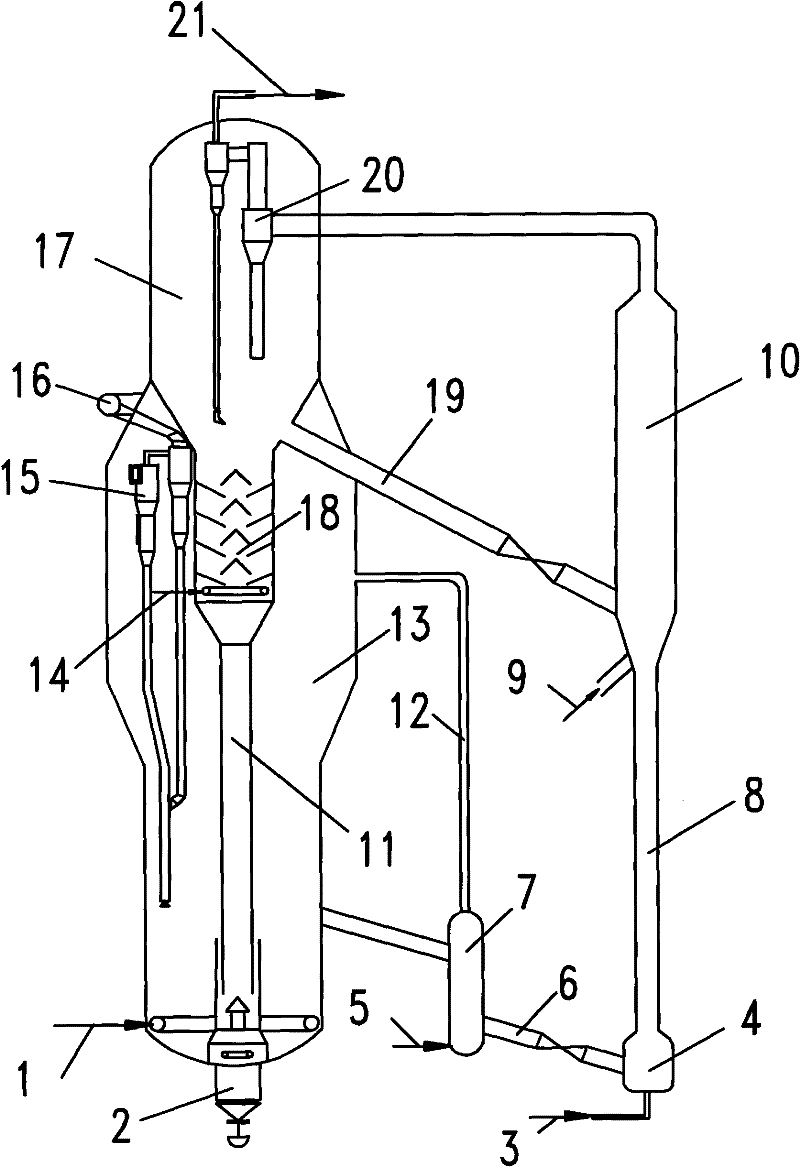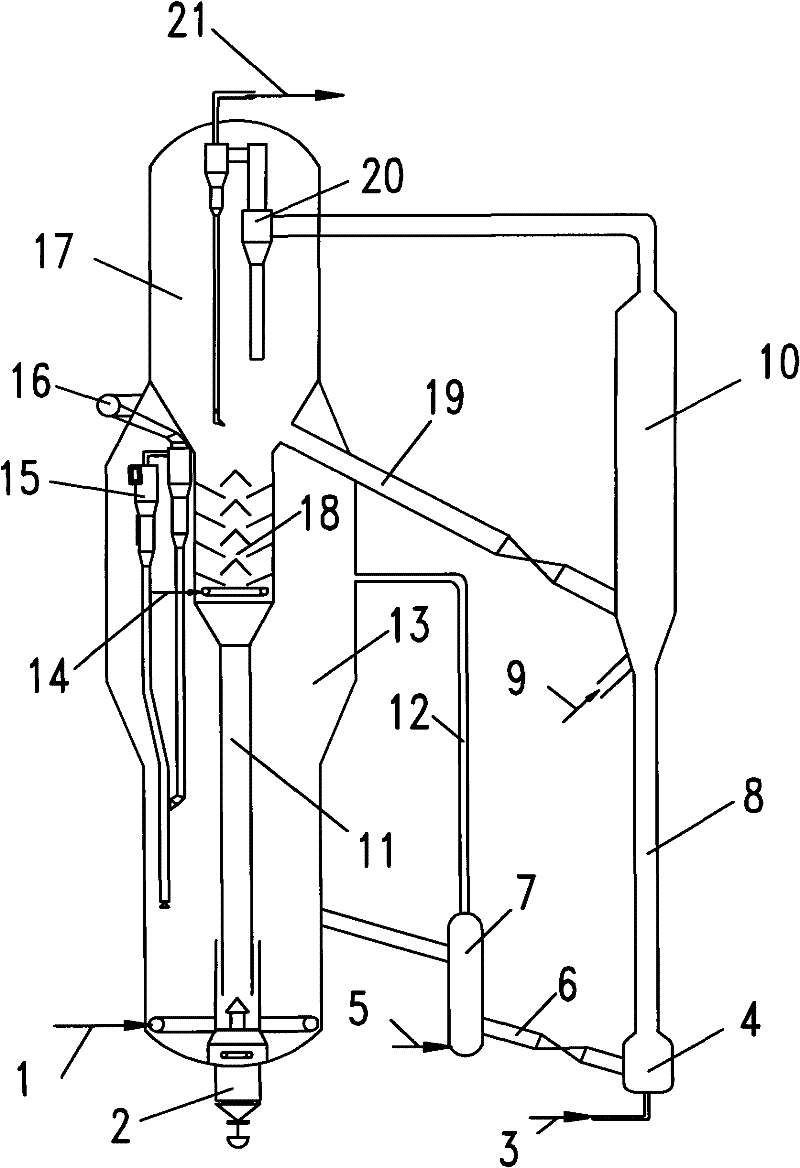Method for catalytically converting naphtha into light olefins
A technology for catalytic conversion of low-carbon olefins, applied in catalytic cracking, petroleum industry, hydrocarbon cracking and hydrocarbon production, etc., can solve the problems of low yield of low-carbon olefins, increase yield, ensure gas-solid contact time, and improve single-pass Yield effect
- Summary
- Abstract
- Description
- Claims
- Application Information
AI Technical Summary
Problems solved by technology
Method used
Image
Examples
Embodiment 1
[0018] in such as figure 1 In the shown reaction-regeneration device, the catalyst is ZSM-5, and the silicon-aluminum ratio is 50 (volume). The average temperature of the regenerator is 675° C., the carbon deposition amount of the spent agent is 2.5% (weight), and the carbon deposition amount of the regenerated catalyst is 0.23% (weight). The settling stripper is located on the upper part of the regenerator, the stripping zone is built in the regenerator, and the stripping medium is water vapor. The naphtha conversion reactor is a riser and bed in series type, the lower section is a riser, and the upper section is a fast fluidized bed. The ratio of the diameter of the upper section to the diameter of the lower section is 2.0:1. The distillation range of naphtha is 25-204°C. The content of alkanes and naphthenes is 93.5% by weight, the content of olefins is less than 02% by weight, and the content of aromatics is 6.2% by weight, and water vapor is added as a diluent, and the m...
Embodiment 2~3
[0020] According to the conditions and steps described in Example 1, only the reaction temperature of the naphtha conversion reactor was changed, and the experimental results are shown in Table 1.
[0021] Table 1
[0022]
Embodiment 3~4
[0024] According to the conditions and steps described in Example 1, only the gas phase velocity of the naphtha conversion reactor was changed, and the experimental results are shown in Table 2.
[0025] Table 2
[0026]
PUM
| Property | Measurement | Unit |
|---|---|---|
| activation index | aaaaa | aaaaa |
| activation index | aaaaa | aaaaa |
Abstract
Description
Claims
Application Information
 Login to View More
Login to View More - R&D
- Intellectual Property
- Life Sciences
- Materials
- Tech Scout
- Unparalleled Data Quality
- Higher Quality Content
- 60% Fewer Hallucinations
Browse by: Latest US Patents, China's latest patents, Technical Efficacy Thesaurus, Application Domain, Technology Topic, Popular Technical Reports.
© 2025 PatSnap. All rights reserved.Legal|Privacy policy|Modern Slavery Act Transparency Statement|Sitemap|About US| Contact US: help@patsnap.com


